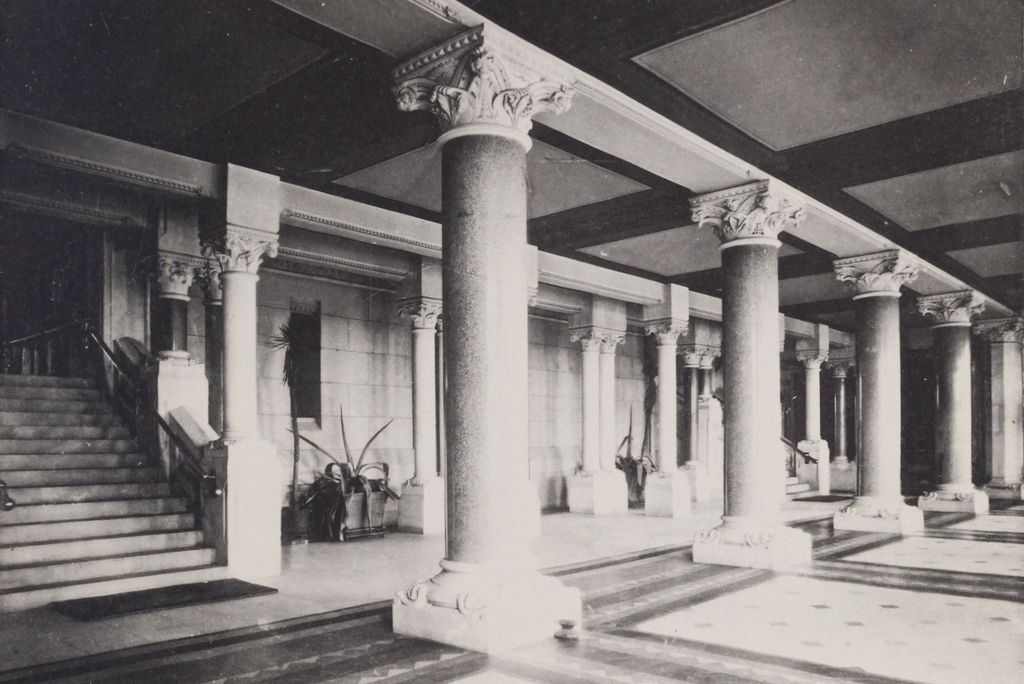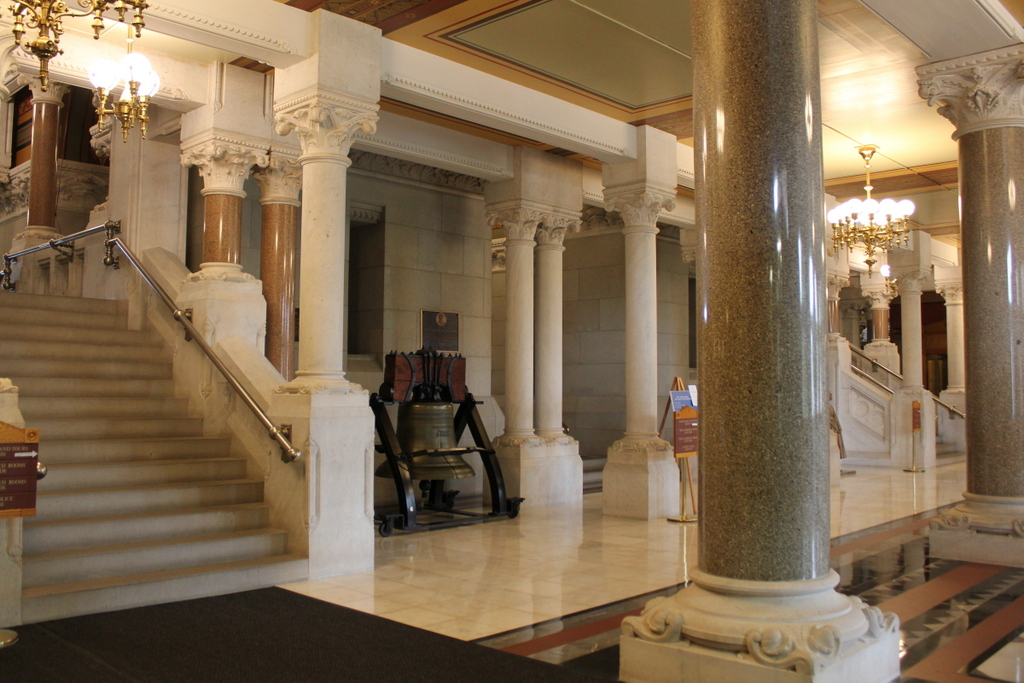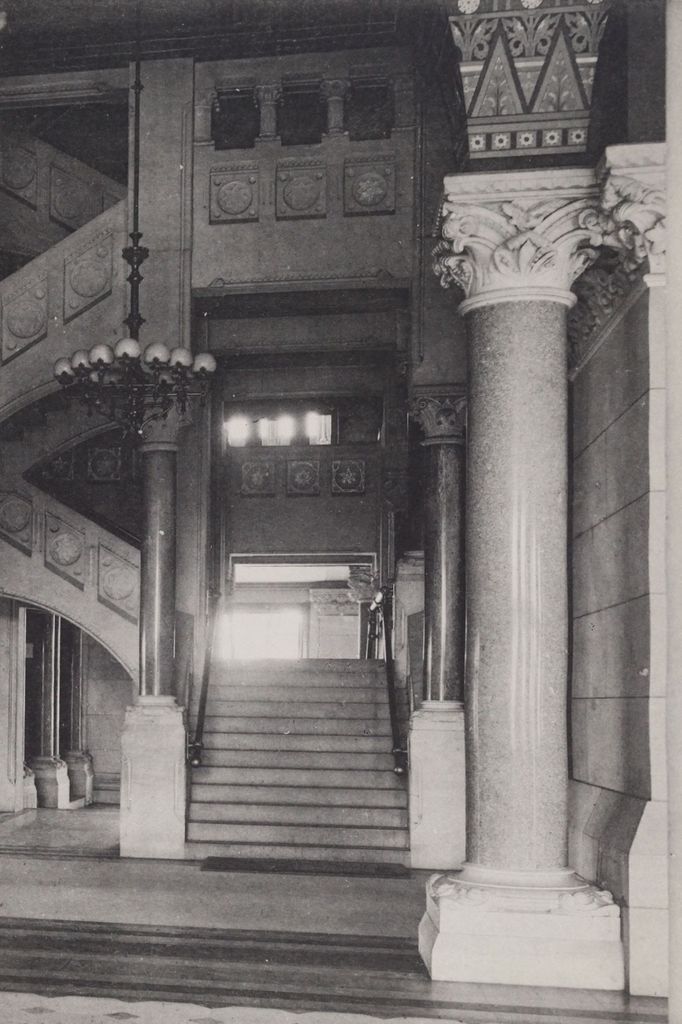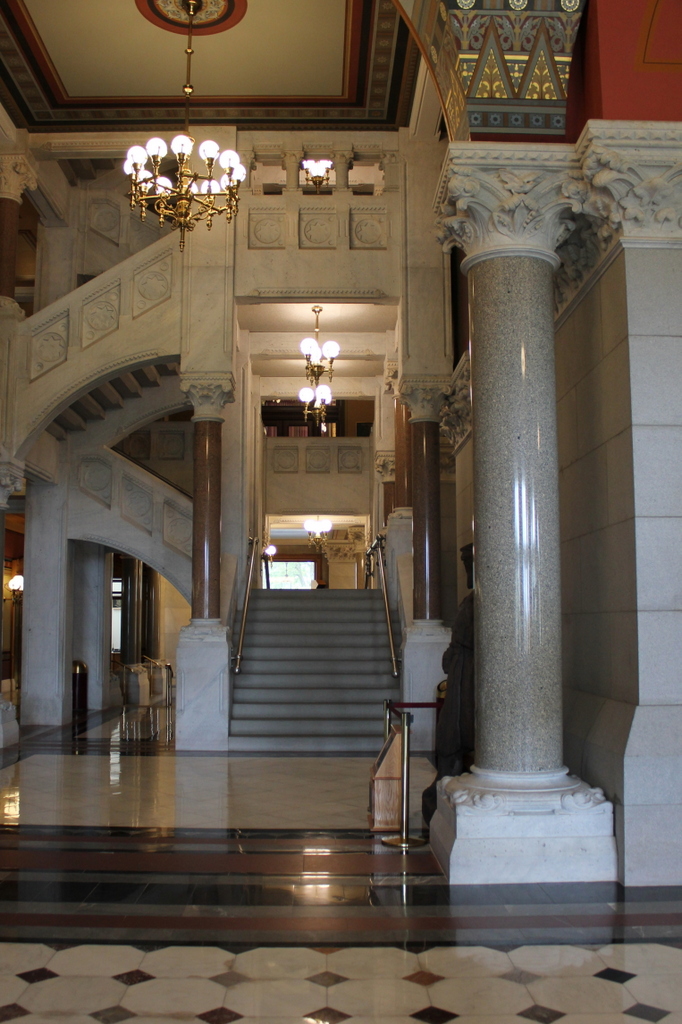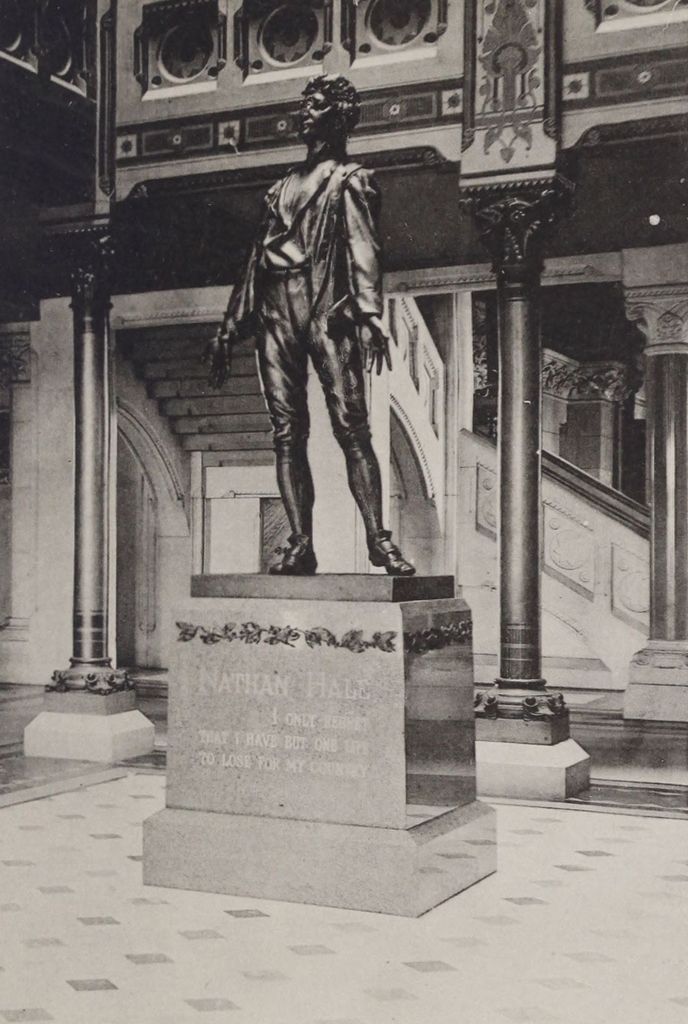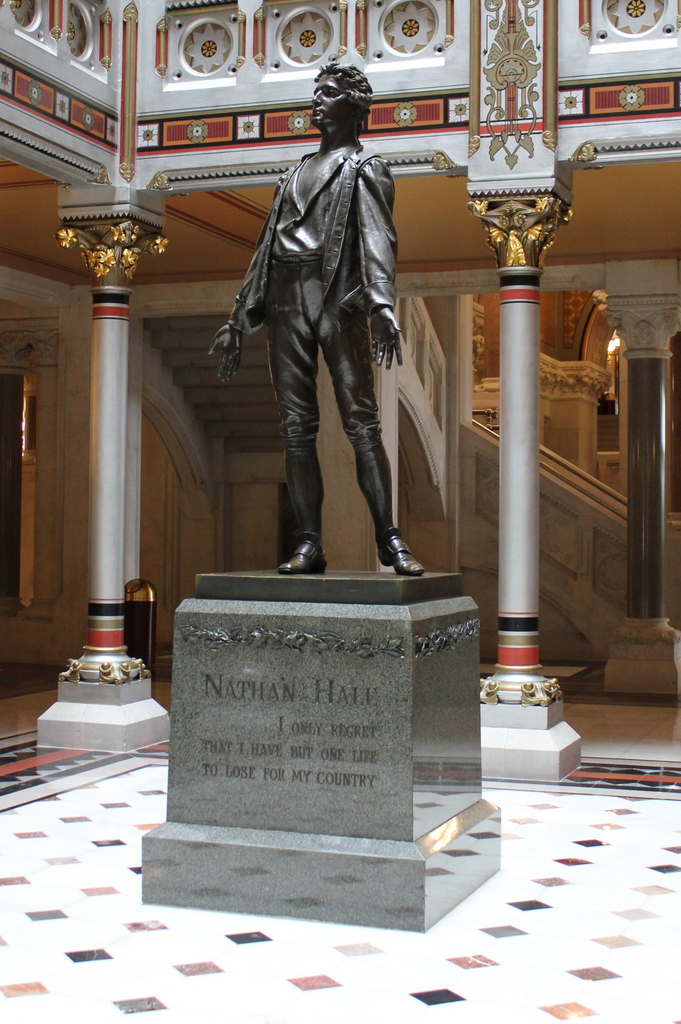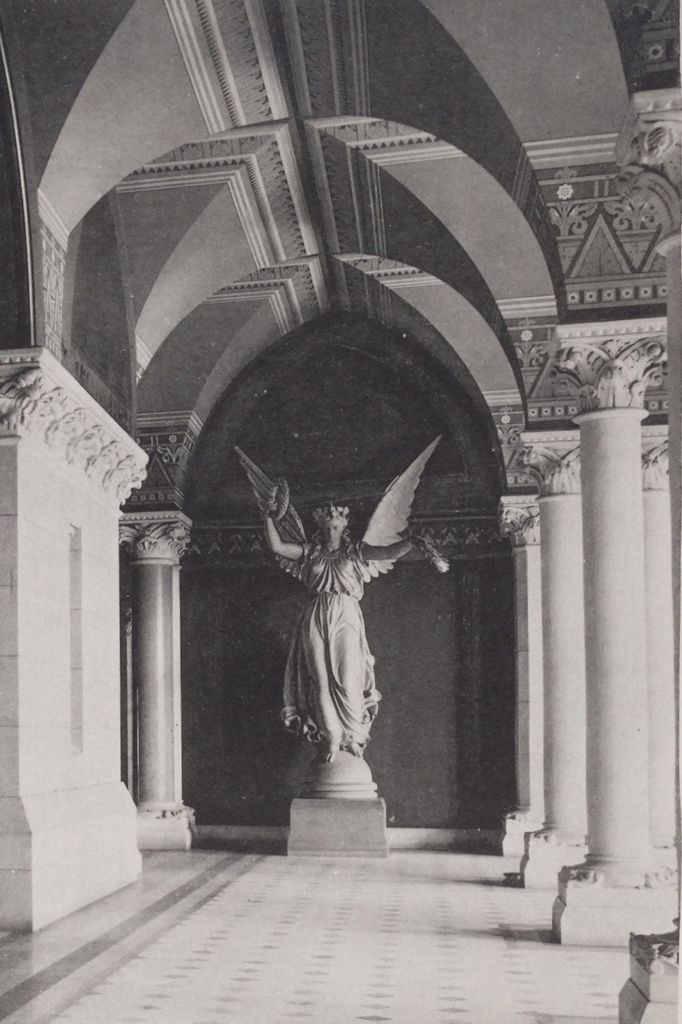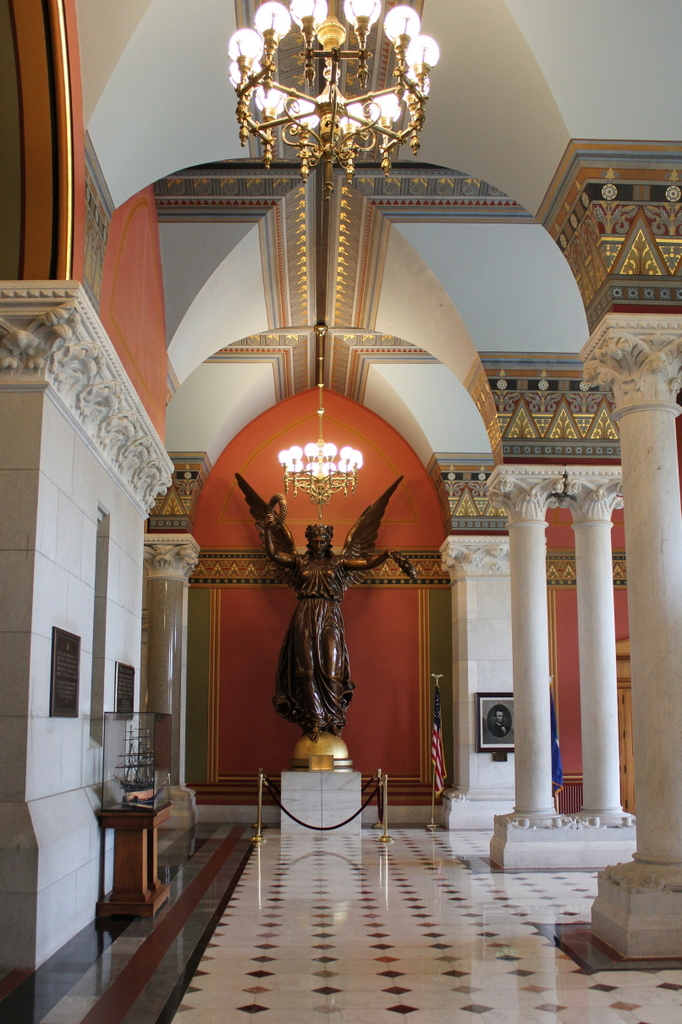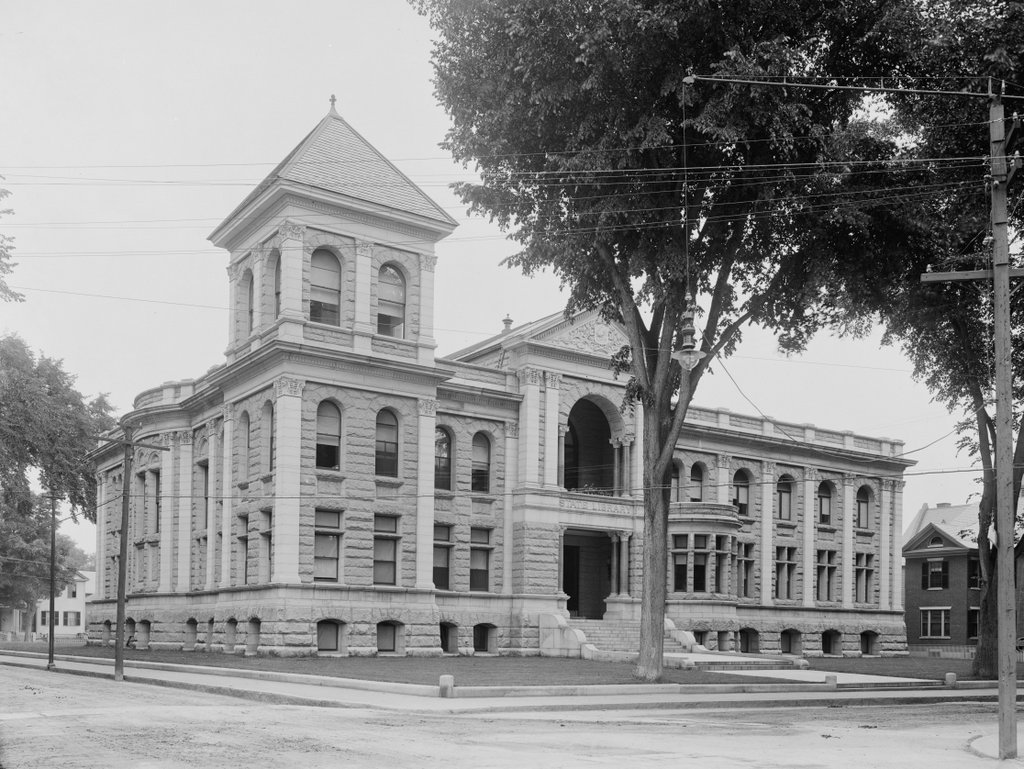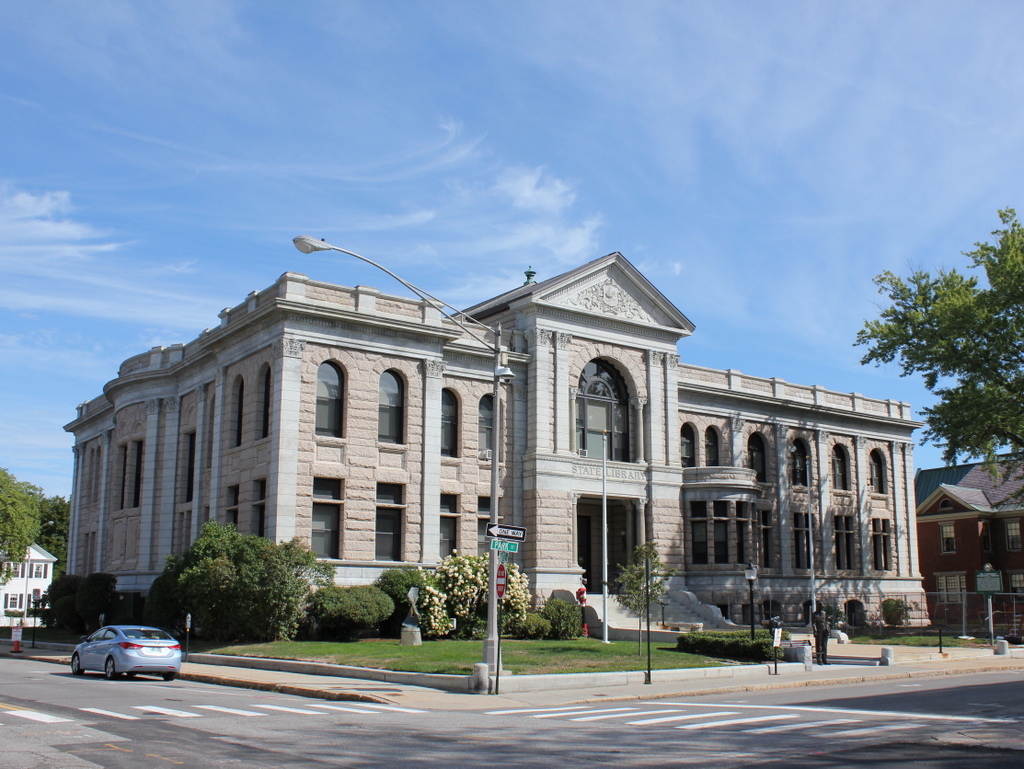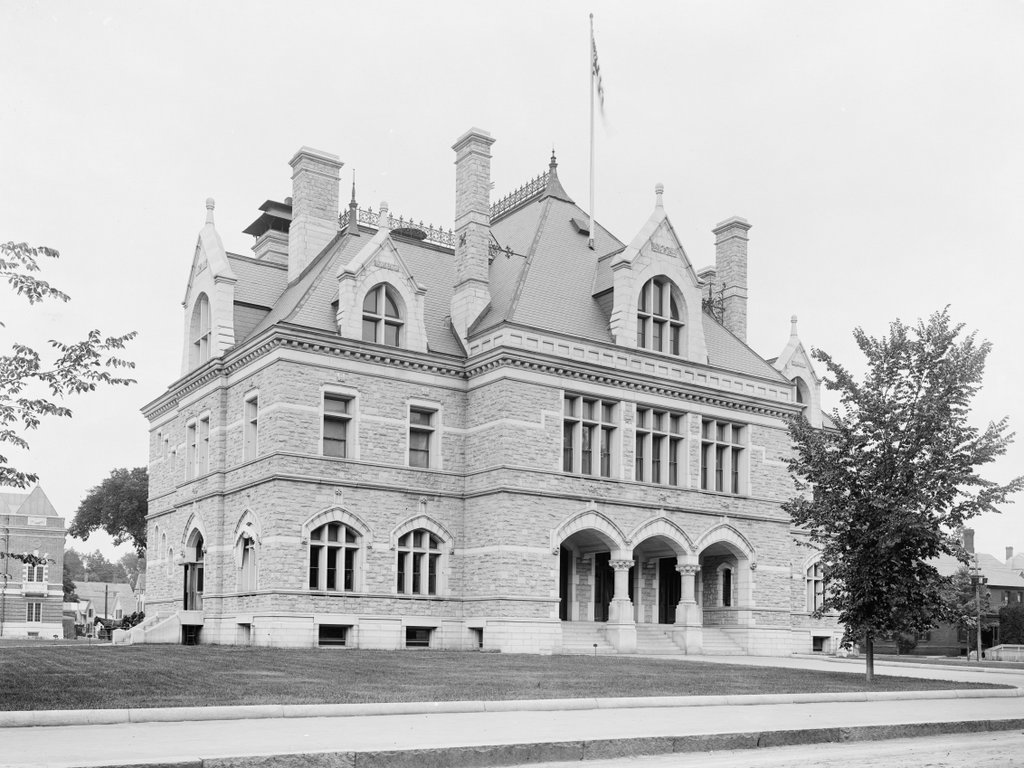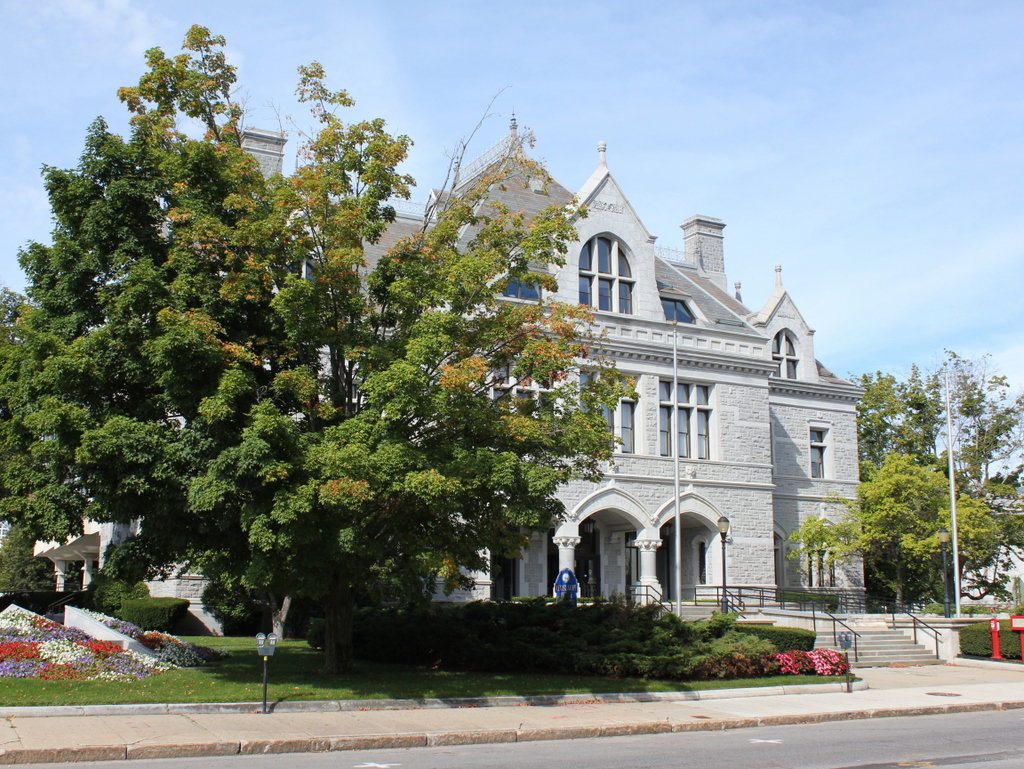The view just inside the south entrance of the Connecticut State Capitol, around 1891. Image from Hartford Illustrated (1891).
The scene in 2019:
These two photos show the entryway at the south entrance of the Connecticut State Capitol. The building was completed in 1878, and it features a highly ornate interior comprised primarily of marble, along with polished granite columns. This entrance is located directly beneath the House of Representatives chamber, which can be accessed by either of the two staircases here. In between the staircases is the rotunda at the center of the building, underneath the dome.
Today, this particular scene has hardly changed in about 130 years since the first photo was taken. The building has been well-maintained and preserved over the years, and it stands as an important architectural landmark. The only significant difference between these two photos is the replica Liberty Bell to the right of the west staircase. This was one of 55 produced by the Department of the Treasury in 1950 as gifts to each of the states and territories, and it even features a painted-on crack to mimic the one on the original Liberty Bell.

